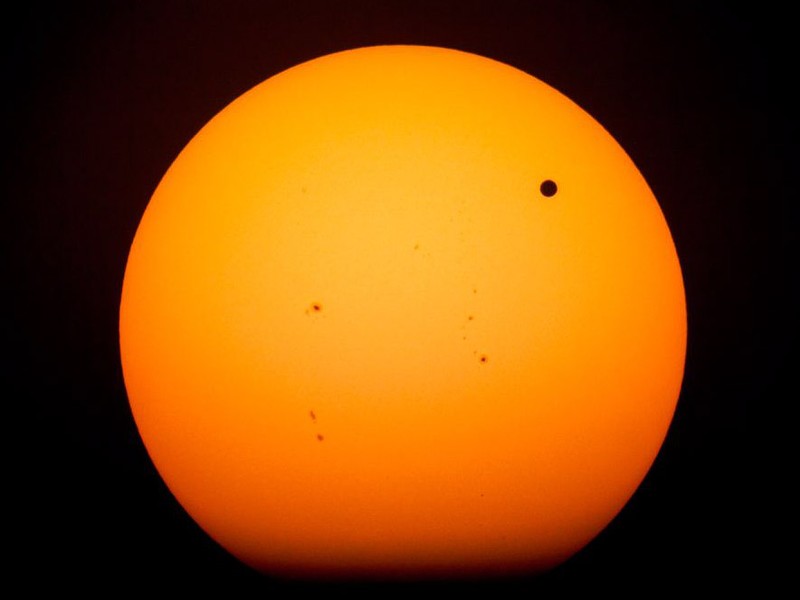
Due: on or before October 22, 2021
We investigate how often we expect to see eclipses (transits) and retrogade events for planets. We see transits whenever the transiting planet passes in-between us and the Sun and we expect to see retrogade events whenever we pass a planet or are passed by a planet as we orbit the Sun.
1. Go to the website www.fourmilab.ch/cgi-bin/Solar/action?sys=-Sf to find the current positions of the planets. Which planets are above the horizon around midnight in Eugene. Which planets are above the horizon in the early evening? in the early morning?
2. Venus last transited the Sun on 2012 June 5. This means that in 2012, Venus passed directly in-between us (the Earth) and the Sun as shown below,

3. Using the Solar System simulator, find the next date on which Venus passes the Earth so that Venus, the Sun, and the Earth line-up as shown in your as in your 2012 image you found for question 2. This suggests that the next transit of Venus will take place in how many years? Attach a screenshot of the image found using the Solar System simulator on the website.
4. The next transit of Venus (after 2012) will actually take place in December, 2117, around 105.5 years after the transit in 2012. What is the explanation for this result?
5. Roughly, on what date will Mars next appear on the Meridian at
midnight for an observer in Eugene? That is,
on what date will the Sun and Mars lie on opposite sides of the Earth?
To find the date, again use the website
astronoo. Attach a screenshot of your image.
Mars undergoes retrograde motion around the time we catch-up with Mars.
6. Find the next date on which Mars is on the meridian at midnight for an observer in Eugene. Attach a screenshot of your image. What is the length of time between these two events? __________
7. Venus, like Mars, also shows retrograde motion. Based on your results from questions 2 and 3, what is the length of time between retrograde events for Venus?
8. Saturn also shows retrograde motion. Does Saturn show retrograde events more frequently than does Mars? than does Venus?